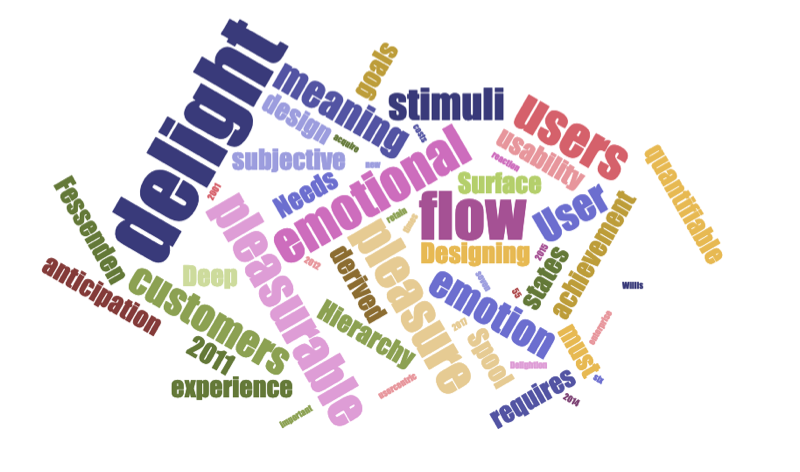 Reading Time: 2 minutes
Reading Time: 2 minutesDelight is a subjective and emotional reaction to stimuli.
“Delightion” of customers is important to our enterprise where Willis (2015) states that it costs six to seven times more to acquire new customers than to retain existing ones and 55% of customers will pay more for better services.
Fessenden (2017) ties delight to Walter’s (2011) Hierarchy of User Needs (based on Maslow’s Hierarchy of Needs), where Pleasurable is noted missing from many User Interface designs. Fessenden divides Surface and Deep delight:
Surface; derived from the experience of the UI elements at risk:
- Brand
- Informality
- Gimmickry
- Potentially untrustworthiness
Deep; derived from an unobstructed flow and achievement of goals:
- Functional
- Reliable
- Usable
- Pleasurable.
Emphasis is placed on usability where, “half the battle is won”.
Functionality, reliability, usability are quantifiable. Pleasurable is emotional, subjective, fickle to external influences and necessary to delight. Chisnell’s (2012) Three Levels of Happy Design agrees that delight requires pleasure and Spool (2014) discusses strategies to improve it.
Spool writes that delight requires our users’ basic expectations to be met and results from authenticity of each approach to designing for:
- Pleasure
- Flow
- Meaning
Flow is perhaps quantifiable when measuring our users’ achievement of externalised goals? A state of flow, meaning and pleasure are internalised in the cognitive and affective domains controlled and expressed emotionally. How do we measure them? More, how do we design to authentically administer the emotion of delight: the emotional states of flow, pleasure, and meaning?
Designing for emotion must be our priority as, “In short, emotions will pull us towards ‘good’ stimuli and push us away from ‘bad’ stimuli,” (Desmet, Overbeeke, and Tax, 2001).
How do we probe and discover what is meaningful and pleasurable? How do we plan for emotion? Walter (2011, pp.54) encourages emotional engagement through anticipation. How do we anticipate our users’ anticipation? The answers must lie with our users and our research and analysis of them?
It surely requires personal contact?
Reference this post
Godfrey, P. (Year, Month Day). Title. Retrieved , from,
References
Chisnell (2012). The Three Levels of Happy Design. Retrieved July 12, 2017, from https://aycl.uie.com/virtual_seminars/the_three_levels_of_happy_design
Desmet, P., Overbeeke, C., Tax, S., (2001). Designing products with added emotional value: development and application of an approach for research through design. The Design Journal, 4(1), 32-47.
Fessenden, T., (2017, March 5). A Theory of User Delight: Why Usability Is the Foundation for Delightful Experiences. Nielson Norman Group. Retrieved November 30, 2018, from https://www.nngroup.com/articles/theory-user-delight/.
Spool, J., (2014, April 24). Pleasure, Flow, and Meaning – The 3 Approaches to Designing for Delight. Retrieved July 12, 2017, from https://articles.uie.com/pleasure_flow_and_meaning/
Walter, A., (2011). Designing for Emotion. New York, NY, USA: A Book Apart.
Willis, S. (2015, January 27). What is Customer Delight? (And Why Should You Care?). Retrieved November 30, 2018, from https://www.impactbnd.com/blog/what-is-customer-delight
